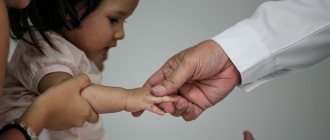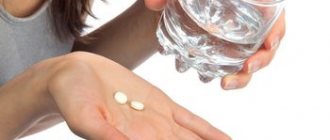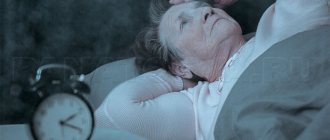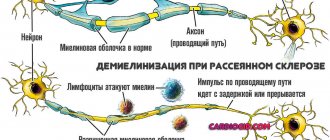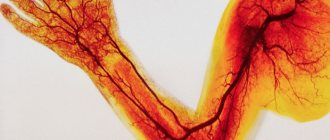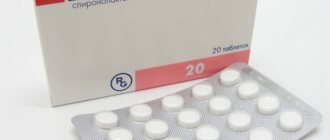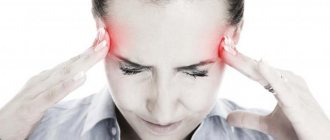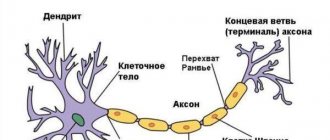Does cerebral palsy progress?
Let's start from this point of view. Cerebral palsy is a consequence of brain injury or lack of oxygen during pregnancy or childbirth. By the way, maternal smoking during pregnancy can lead to a lack of oxygen in the fetus and complications. The child has been injured, part of the brain is damaged and does not function properly. Then the brain no longer dies; there is no further development of this particular process. Then there are the consequences of the trauma that happened; then the brain does not die. That is, when a child grows, it is necessary to treat not so much the cerebral palsy itself, but the consequences of a brain injury.
Neurologists, of course, can better tell you about the restoration of damaged areas of the brain. And it is difficult to say whether it is possible to restore exactly the part of the brain that was damaged. But the structure of the human brain is so complex that it is quite possible to compensate for the loss of some neurons by activating others. In other words, the brain begins to compensate for the loss of neurons and neural connections by using other parts of the brain. And restoring brain activity, restoring certain functions in a child with cerebral palsy is quite a feasible task. That is, it is possible to cure the consequences of cerebral palsy .
Massage and physical therapy
Exercise therapy is used after achieving an adequate ICP value and in the absence of convulsive syndrome. Without physical activity, therapy will not be effective.
The format and duration of the exercises are selected individually, through the joint efforts of a neurologist and a rehabilitation specialist:
- loads should prevent muscle atonia and prevent atrophy of unused muscle groups;
- with their help, the formation of contractures that fix the muscles in an anatomically incorrect position is avoided.
Training should be carried out every day, the increase in loads occurs in stages and is monitored by a rehabilitation specialist. The set of exercises includes: gymnastics, fixing and holding the limbs in a given position, stretching the muscles, swinging the limbs in the joints (in increasing amplitude), walking, relaxation training and with the participation of antagonist muscles.
The technique of climbing on inclined surfaces is also used, which helps the child develop a sense of balance. At the end of the session, the session is supplemented with endurance exercises.
Spastic diplegia requires the inclusion of loads with continuous movement, the atonic-astatic form of cerebral palsy requires short-term exercises, and the atonic one requires maintaining balance.
The following types of massage techniques are used:
- classical massage course lasting up to 30 sessions;
- scleromeric - blocks the pathological pain impulse from the periosteum to the brain;
- acupressure relaxation - influence on acupuncture points.
As an addition to exercise therapy, stimulation massage is used, aimed at developing antagonist muscles. Each individual muscle should not only receive additional load, but also be stretched as much as possible.
Therapeutic baths
Baths with infusion of the series will help reduce muscle spasticity. To obtain an infusion, a string (1 glass) is mixed with a similar amount of nettle. Add sage, laurel leaves, tansy, juniper berries, rosemary branches, birch buds, mistletoe - 1/2 cup of each component. The mixture in an amount of 0.1 liter is poured with two liters of water, boiled for 10 minutes and left to brew. After this, the composition is filtered and added to the bath. After 20 minutes of taking a bath, the child is put to bed, rubbing with tincture from the shepherd's purse.
You can also take baths with rosehip; they help alleviate the effects of paralysis. For the composition, use rose hip root (three tablespoons), add a liter of water, and the mixture should simmer for an hour. Then the broth is filtered and poured into the bath. The procedure is repeated twice a week.
Generally speaking, treating cerebral palsy requires patience. All procedures are carried out after consultation with a doctor who monitors the dynamics of the activities.
USEFUL LINKS:
- Direct link to a forum thread for parents of children with cerebral palsy.
- You can ask a question and receive moral support by mail.
- The Stimul store offers a wide selection of equipment used for the rehabilitation of children and adults with cerebral palsy. Hippo simulator (horse riding simulator), which helps restore reciprocal body movements. Rehabilitation treadmills for teaching walking skills. These links also contain other rehabilitation and care equipment. For children with a high degree of cerebral palsy, we recommend stabilizing pillows that allow you to place the child in the most comfortable position.
- Select a fund that will help pay for your child’s treatment in a chosen institution, or purchase equipment for rehabilitation - using this link
- Seek help: ADELI Medical Center in Slovakia - comprehensive neurorehabilitation of children and adults with cerebral palsy.
How can plants help?
Most often, plants such as wormwood, red clover, shepherd's purse, string, rose hips, and Japanese sophora are used in treatment. Tinctures and decoctions are prepared from plants or their parts and used for bathing.
A collection is prepared from wormwood in combination with valerian root in a 2:1 ratio; mint and St. John's wort are added if desired. Art. pour a spoonful of the mixture with boiling water (200 ml), leave for half an hour, then filter. Take the infusion three times a day, a tablespoon on the eve of main meals.
Red clover is used as a remedy that increases vitality, accelerates recovery and relieves vitamin deficiency. It is collected while in bloom, prepared as an infusion or brewed and drunk instead of tea. The plant is also used externally. To prepare the composition, 25 g of clover heads are mixed with white wine and olive oil (1 glass). The mixture is placed on the fire until the liquid has completely evaporated, after which it is allowed to cool and filtered. The product is used for rubbing the limbs, it is drunk three drops.
Tincture from shepherd's purse will help alleviate the manifestation of cerebral palsy. The composition has a special effect after taking herbal baths. Preparation involves mixing 0.1 liters of alcohol and 25 g of herbs. The mixture is poured into a dark glass container, left for two weeks, then filtered and used for rubbing.
Can cerebral palsy be cured?
Not so long ago, it was believed that cerebral palsy occurs as a result of a birth-related traumatic brain injury, and it was an unsuccessful birth that caused the child’s illness.
It has now become clear that complicated, protracted labor is very often a consequence of intrauterine damage to the fetus, which could occur at any period of pregnancy due to any infections or intoxications and other diseases suffered by the mother. As a result, the fetus cannot move correctly along the birth canal, since it lacks or is sharply weakened the innate motor reflex necessary for this - the “head to torso reflex”, first described by the outstanding neurosurgeon N. N. Burdenko. The head of the fetus lingering in the birth canal is subjected to mechanical compression, and that’s when traumatic brain injury, oxygen deficiency, and asphyxia (suffocation) occur.
But even in cases where childbirth proceeds relatively well, intrauterine disease of the fetus and associated brain damage cause deviations in the development of the child, and in particular the occurrence of cerebral palsy,
The further fate of the newborn in this case depends on a timely diagnosis and, therefore, timely treatment. The experience of specialized departments for newborn children with cerebral palsy has shown that if the timing of treatment is not missed and it, which is very important, is carried out systematically and over a long period of time, then by the age of 3–4 years, even in severe cases, it is mostly possible to improve the child’s condition so much that he becomes practically healthy, can attend kindergarten, and then school.
The trouble is that often in the first days and sometimes even weeks of life, the signs of cerebral palsy are still barely noticeable. But even later, when the problem is already obvious, many parents still hesitate to see a doctor,
It is human nature to push away the worst assumptions. A child, for example, looks lethargic, lags behind his peers in the development of motor skills, but those around him (out of good intentions, of course) drown out the mother’s anxiety with assurances that this is “such a growth”, that he will get older and “get his way”, “outgrow " and so on. The mother, of course, wants to believe this, and she waits. And the time when it is possible to effectively help a child is running out irrevocably.
Parents should know that cerebral palsy is manifested by the absence or weakness of such innate reflexes as the support reflex (if the child is held vertically on a solid plane, for example, on a table covered with a blanket and sheet, HE BENDS LEGS; IN MILIER CASES, HE RESTS ON THE TABLE WITH ONE TOES
, and not with the whole foot), crawling reflex (if you put a child on his stomach with his knees bent and press the palm of his hand on his feet,
HE DOES NOT STRAIGHTEN HIS LEGS AND DOES NOT TRY TO MOVE FORWARD)
.
If you take him under the armpits and sort of lead him along the same flat plane, he DOES NOT TRY TO WALK WITH HIS LEGS
, as healthy children do, AND DRAG THEM.
Further, as the child grows, a lag in the development of other motor skills is revealed. A child suffering from cerebral palsy CANNOT HOLD HIS HEAD, DOES NOT SIT, DOES NOT STAND UP
, unable to move. For reference, let's say that a healthy child from the end of the second month holds his head upright, at 4 - 5 months he lies on his stomach with straightened legs, leaning on his elbows and raising his upper body, at 6 - 7 months he can sit up and is held in a sitting position without support without falling to the sides.
If a sick child is placed on his stomach. his muscle tone sharply increases - the flexors of the torso and limbs, and he takes a pose as if gathered in a ball, and if you turn him on his back, the tone of the muscles - the extension of the shadows - increases just as clearly, and he lies down with his arms and legs outstretched and slightly thrown back head.
With cerebral palsy, along with the weakness of congenital motor reflexes, the activity of those tonic primitive reflexes remains, which in a healthy child disappear in the first or second month of life.
In a patient with cerebral palsy, when the head is lowered to the chest, the arms bend and the legs extend, but if the head is thrown back, the opposite happens - the arms extend and the legs bend.
The main goal of treatment is to develop weakened motor reflexes and inhibit established tonic reflexes. If this is not done on time, the child will remain crippled.
In the complex of therapeutic measures, the most important place belongs to physical education, massage, compliance with the orthopedic regimen, and drug therapy is also used aimed at stimulating brain functions.
With cerebral palsy, not only motor skills are impaired, but also speech development. The child’s tongue and lips may be inactive, and the tongue often has an irregular shape. Sometimes involuntary, violent movements of the tongue and lips occur, which makes it difficult to pronounce words.
Delayed mental development is gradually revealed; the child begins to understand speech with a delay: he slowly forms indicative cognitive reactions, attention, memory,
It is therefore very important to begin timely correction of the so-called pre-speech development. The formation of speech stimulates cognitive activity and the child’s psyche. Such classes are conducted by a speech therapist, who also gives advice on how to work with the child at home.
If necessary, the child is given plaster casts and mud therapy is prescribed. mineral baths, orthopedics and surgical treatment. As you can see, you will have to arm yourself with patience and put in a lot of effort. And these efforts, as a rule, are not in vain.
But can a child recover if treatment is started late, that is, after 3-4 years, or if the damage to the central nervous system was severe and measures taken in the first years of life did not give the full effect? Not always, but very often it is possible, with long-term, step-by-step treatment, to ensure that the child begins to speak, walk without a gross defect, is able to study at school, and subsequently master any specialty.
Even if time is lost, the situation is not completely hopeless. Let us repeat: the earlier treatment is started, the greater the hope for success. Still, better late than never.
K.A. Semyonova, professor.
More articles on similar topics: Cerebral palsy
articles
Return to Health page
A collection of useful tips
discuss on the forum go to the “articles” page News Announcements


